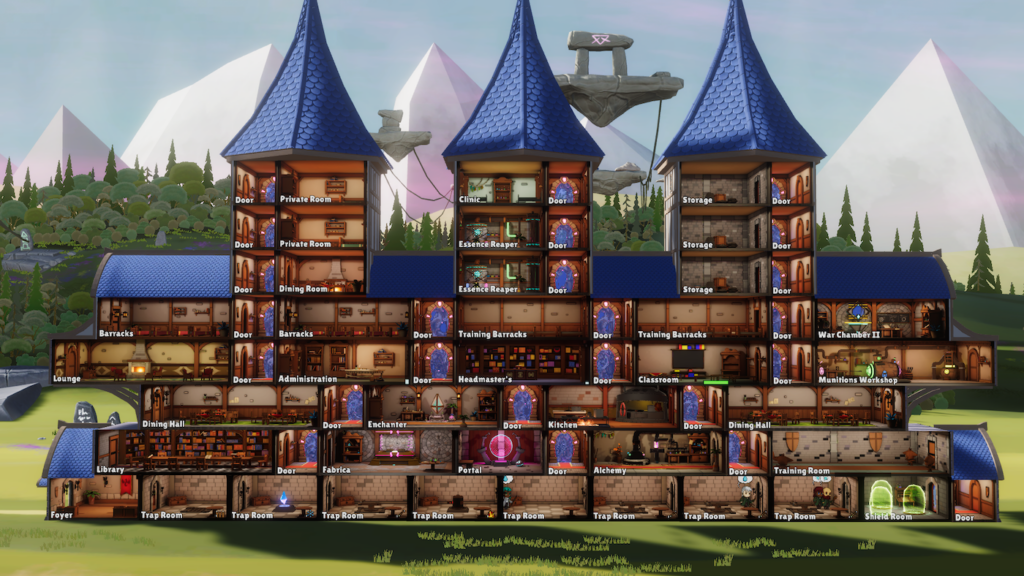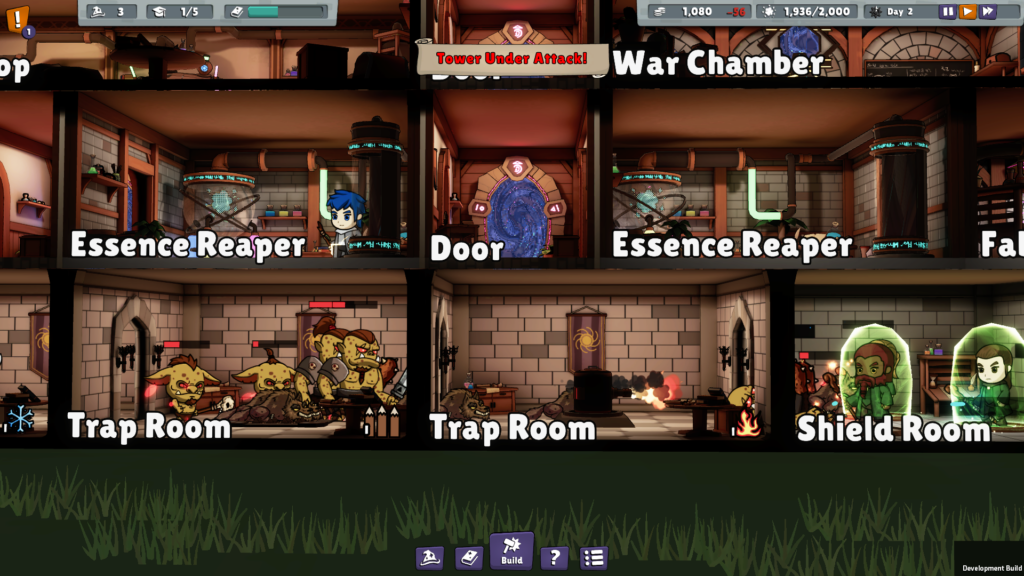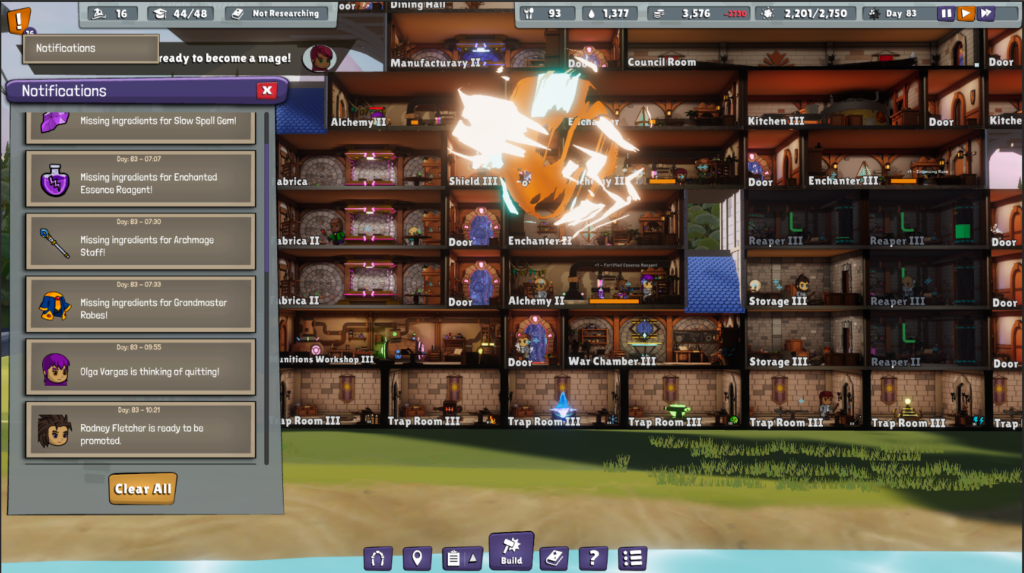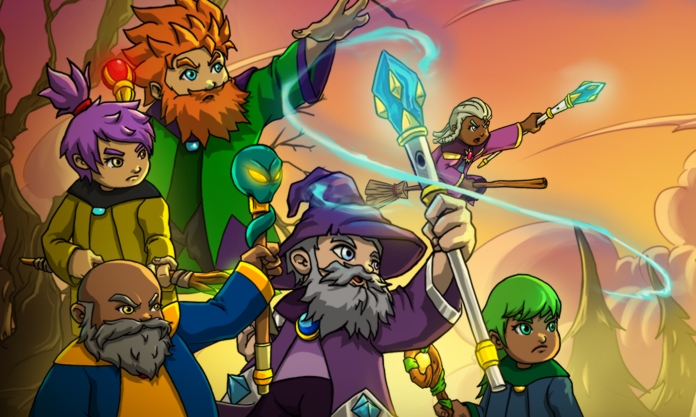When the allure of game development clashes with the necessity of a traditional job, the only choice is to juggle both endeavors simultaneously. And that’s exactly what Jason Larabie did. Operating under the name RodentGames, Larabie has taught himself the necessary skills to create his upcoming game Artificer’s Tower, a happy mix of base building, management sim and boss battles. “I simply couldn’t shake off my passion for making games”, says Larabie. “So, I ended up living a dual life, working my day job and moonlighting as a developer.”
Working two jobs is hard and there were times that Larabie had to step away from developing the game for a few months because of ‘severe tunnel vision’. “As the only person on the project it’s too easy to go down a path that ends up being a dead end”, he admits. But Labrie is trying to better listen to the signals his body and mind are sending in order to prevent burnout. And if that fails, his phone sends him regular reminders ‘Be a Human’, so he remembers to contact friends and family.
Why did you become a solo developer?
“Funding? Hah! The story might ring familiar for a bunch of us. I got my start dabbling in programming and video games back in the 80s, but needed a job and landed in the business world. That constant itch to create games was always there, lurking, but life’s obligations kept it just out of reach. I’ve likened my feeling to the ‘Strange Mood’ from Dwarf Fortress. I simply couldn’t shake off my passion for making games. So, I ended up living a dual life, working my day job and moonlighting as a developer. Before Artificer’s Tower, I tried to push away the thought of game development, but it was no use. I was, and am, too in love with the idea of making games to stop.”
What are the biggest advantages of working solo?
“It’s the freedom to be the ultimate decision-maker, there’s no one else to debate with. This autonomy allows for rapid pivoting and instant action. I don’t have to wait on anyone else’s schedule or workload to progress. The only obstacle to implementing that new UI feature is, well, me!”
And the biggest pitfalls?
“For starters, there’s a lot I don’t know. Not having worked in the games industry means I’ve had to learn everything from scratch. Sound design, art direction, marketing, you name it. It’s a constant cycle of questions and research. Then there’s tunnel vision. As the only person on this project, I can get feedback, sure, but fully sharing my vision and getting the right advice isn’t always straightforward. It’s too easy to go down a path that ends up being a dead end or doesn’t quite align with what I originally envisioned for Artificer’s Tower.”

What’s your creative process?
“It’s a mix-and-match, starting with solo brainstorming sessions. Inspiration strikes from various places, often leading me to map out the direction I want to head in. I was really struck by Jonas Tyroller’s recent video essay on design as a search algorithm. It’s an excellent framework. After I’ve got the bones of an idea, I loop in a few trusted peers to help flesh it out and, importantly, help me cut back on my tendency to over-scope. From there, it’s all about iteration. I lean heavily on text for as long as possible, postponing prototyping until it’s absolutely necessary. This is something I plan to delve deeper into with my next project.”
How do you stay motivated through (years of) development?
“This is a tricky question. I don’t think I stayed motivated through all the development. I’ve viewed this as a second job, and it wasn’t always going to be fun. There were times that I had to put the game down and step away for a few months as the tunnel vision got to a point where I couldn’t see where the game was going. What kept me moving forward was the goal of releasing a game. This game was supposed to be a short project to learn the ins and outs, but it took on a life of its own. One area I’ve learned to change in this regard is getting feedback faster. Seeing people play the game naturally motivated me over the last two years of development. In all future games, the goal will be to do that as soon as possible.”

Will you ever work in a team or is it only solo for you?
“I definitely would work in a team in the future! Artificer’s Tower is only the first step for RodentGames. The plan is to keep going and meet people along the way who I might be able to scoop up in the future. This isn’t a truly solo project, as I’ve had some contractors help out immensely in concept art, sound, and on the PR front.”
How did you get the idea for Artificer’s Tower?
“It all started with wanting to tackle a small project that a programmer with limited art skills could tackle. I’m not a mobile gamer, but I did enjoy Fallout Shelter and wrongly thought that the 3D world and 2D characters should be pretty easy to make work. The theme of wizards & mages has always been in my mind so I felt that would be a fun starting combination. The key was that I wanted a game like Fallout Shelter meets Anno with some crafting chains to have more to do than what a mobile game could offer.”
“After building out the systems for AI/building/crafting, I had a bit of the game prototyped out, but it was missing something. I added the first goblin and the basic combat mechanics, and that felt good but still not quite there. The final piece that solidified the game for me was summoning bosses. This added a unique twist, to have a colony-sim meets tower defense plus bosses.”
What’s the biggest lesson learned from this project?
“From this project, I’ve taken away two major lessons, each vying for the top spot in terms of impact. I had to learn 3D modeling, and texturing to be able to create a game I’d want to look at and play which was a whole new set of skills. The second lesson was related as it was lighting all this new art. The challenge was from the initial design, learning to light 3D rooms independently of the day/night cycle and lighting the 2D characters at the same time.’

The toll on your mental health can be quite high for solo developers. How do you deal with that?
“When your body and mind tell you to take a break, you have to listen. I’ve been guilty of not doing this many times, which leads to burnout. You have to take time for yourself in whatever manner that means for you. To be perfectly frank I don’t think I have this solved. I have goals for this year to be better by meditating more, detaching from outcomes, and I have a reminder in my phone: ‘Be a Human’ to remember to contact friends and family!”

